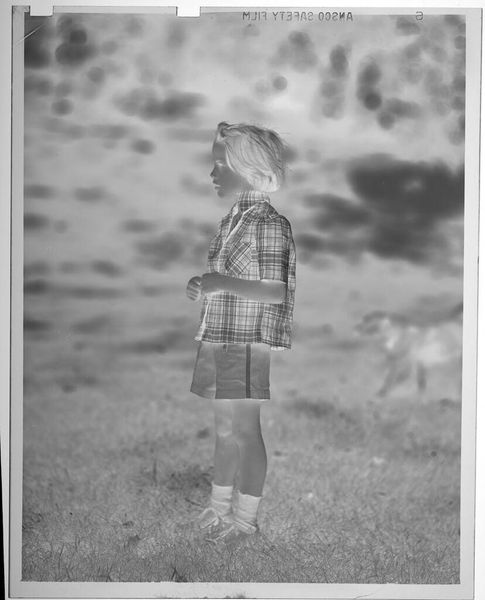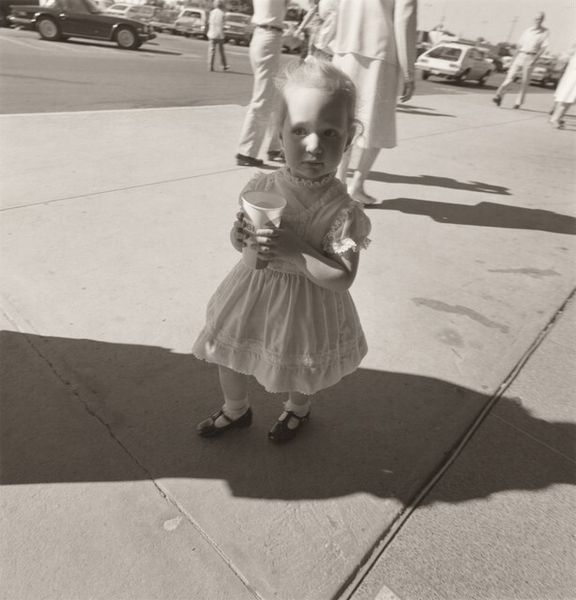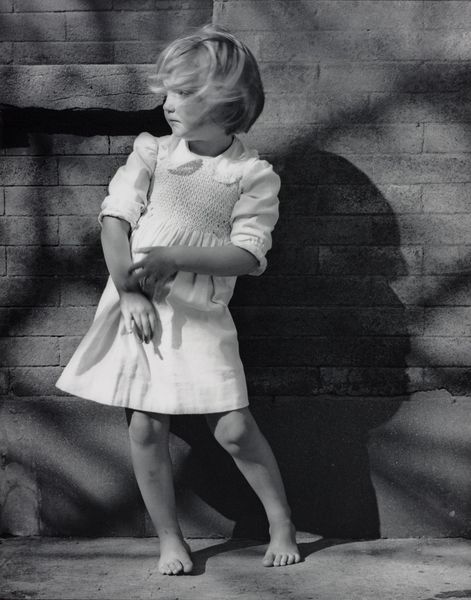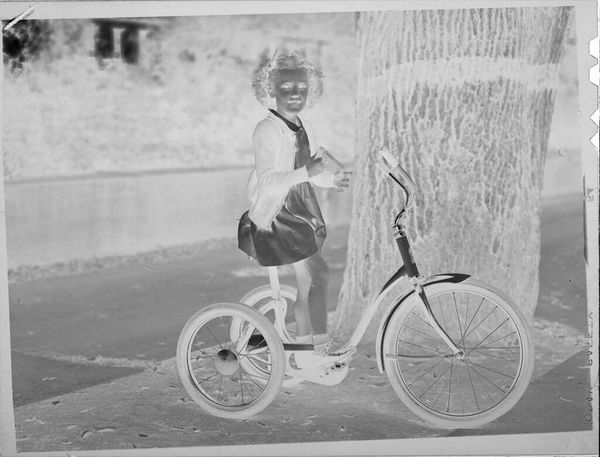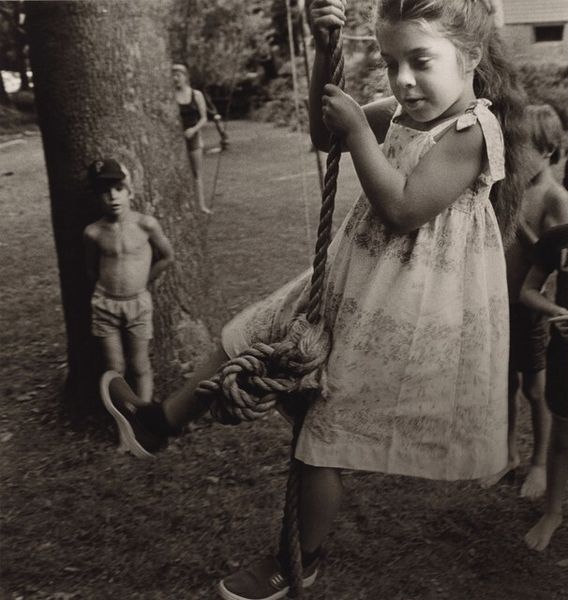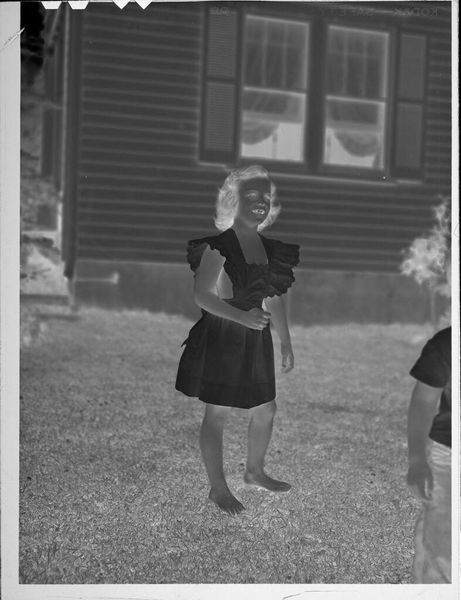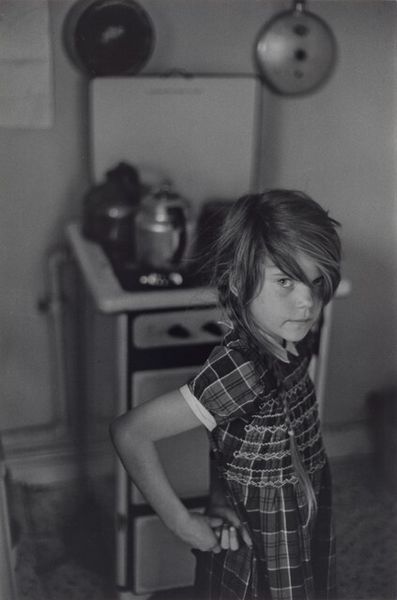
photography, gelatin-silver-print
#
portrait
#
contemporary
#
black and white photography
#
black and white format
#
street-photography
#
photography
#
black and white
#
gelatin-silver-print
#
monochrome photography
#
monochrome
#
modernism
#
monochrome
Copyright: Diane Arbus,Fair Use
Editor: Diane Arbus's gelatin-silver print, "Child with a toy hand grenade in Central Park," taken in 1962. It’s an intense portrait. The boy's expression is haunting and that object… it just clashes so violently with childhood innocence. What do you see in this piece, particularly concerning its cultural impact? Curator: The photograph, taken during the Cold War, resonates deeply with anxieties surrounding violence and societal instability. Arbus often explored the margins, highlighting those often overlooked. This image serves as a powerful critique of idealized notions of childhood innocence juxtaposed against a backdrop of potential for violence and destruction. Editor: So, you're saying the power of the image lies in the tension between the child’s vulnerability and that object of aggression. Curator: Precisely. How does it make you consider the complex intersections of gender, power, and societal expectations during that era? Editor: I hadn’t really considered gender. I mean, it seems like boys were – and sometimes still are – socialized to play with aggressive toys… So does the photo critique or reinforce it? Curator: That is precisely the tension, isn’t it? Arbus forces us to confront uncomfortable realities. She asks us: What are we doing to our children? To ourselves? What futures are we creating? Editor: It is thought provoking – almost unsettling. I initially reacted to the boy’s pose, but I now understand how it's situated within a broader cultural landscape. Curator: It's a potent example of how art can serve as a mirror, reflecting and challenging prevailing norms.
Comments
No comments
Be the first to comment and join the conversation on the ultimate creative platform.


